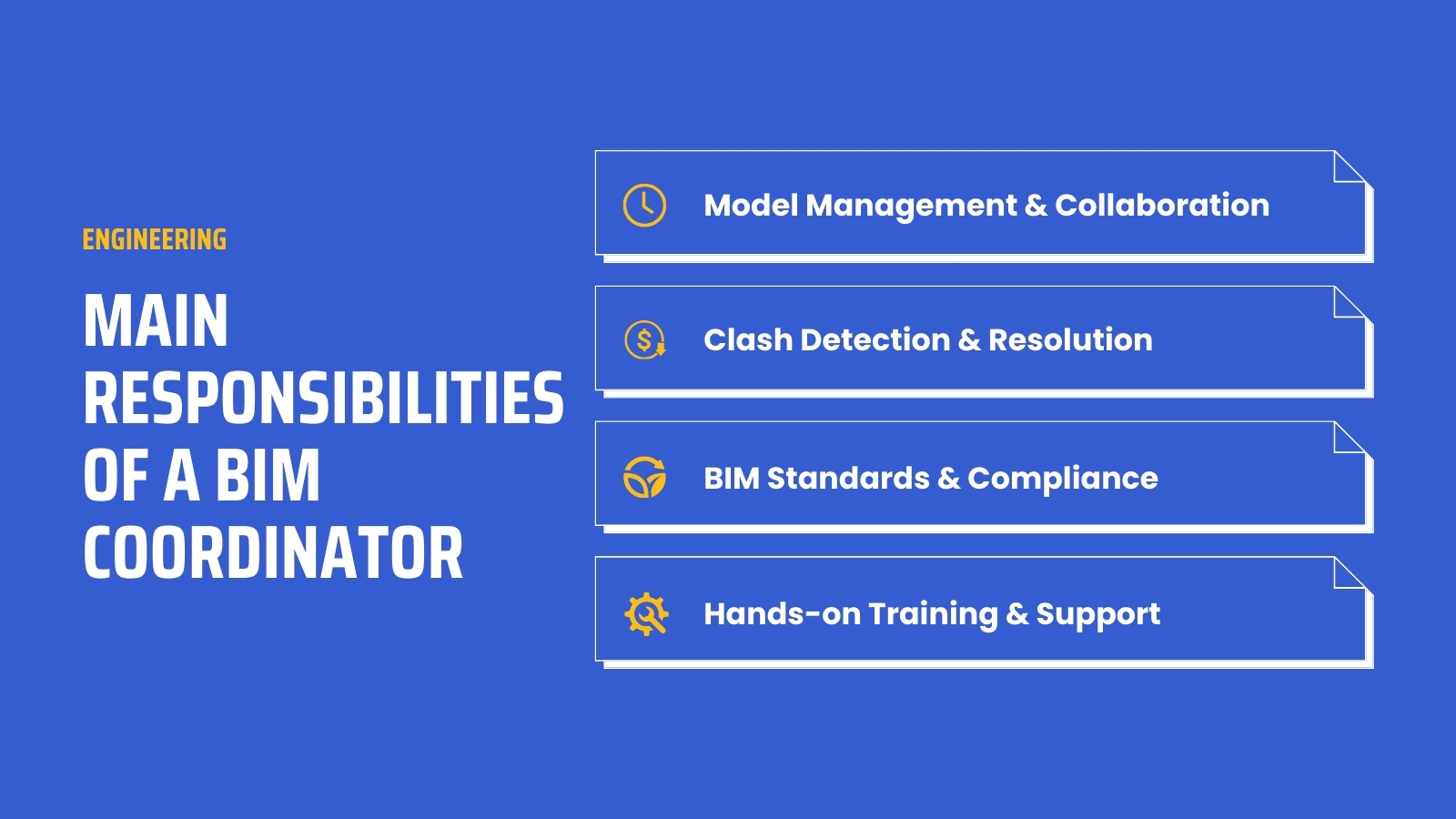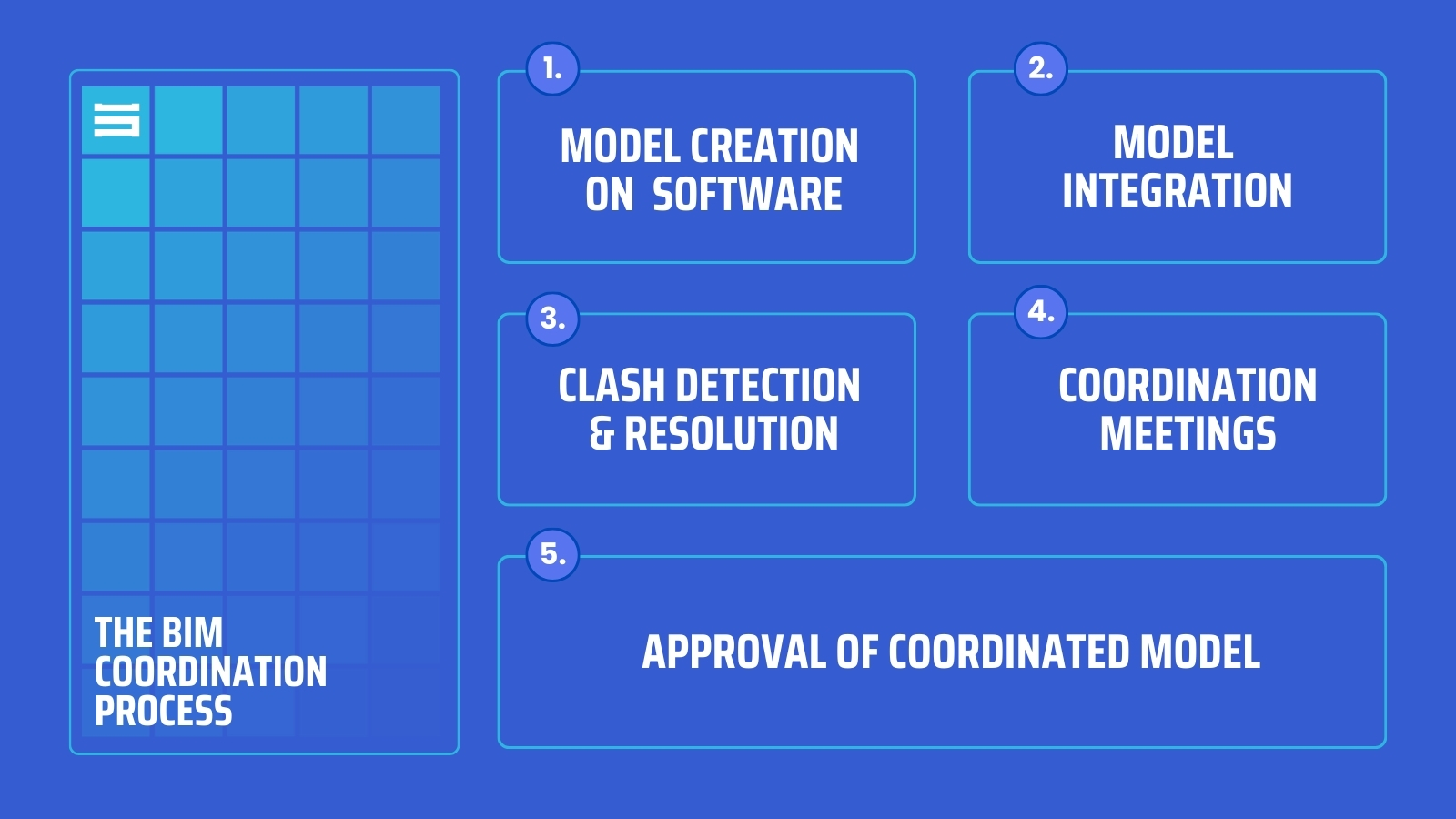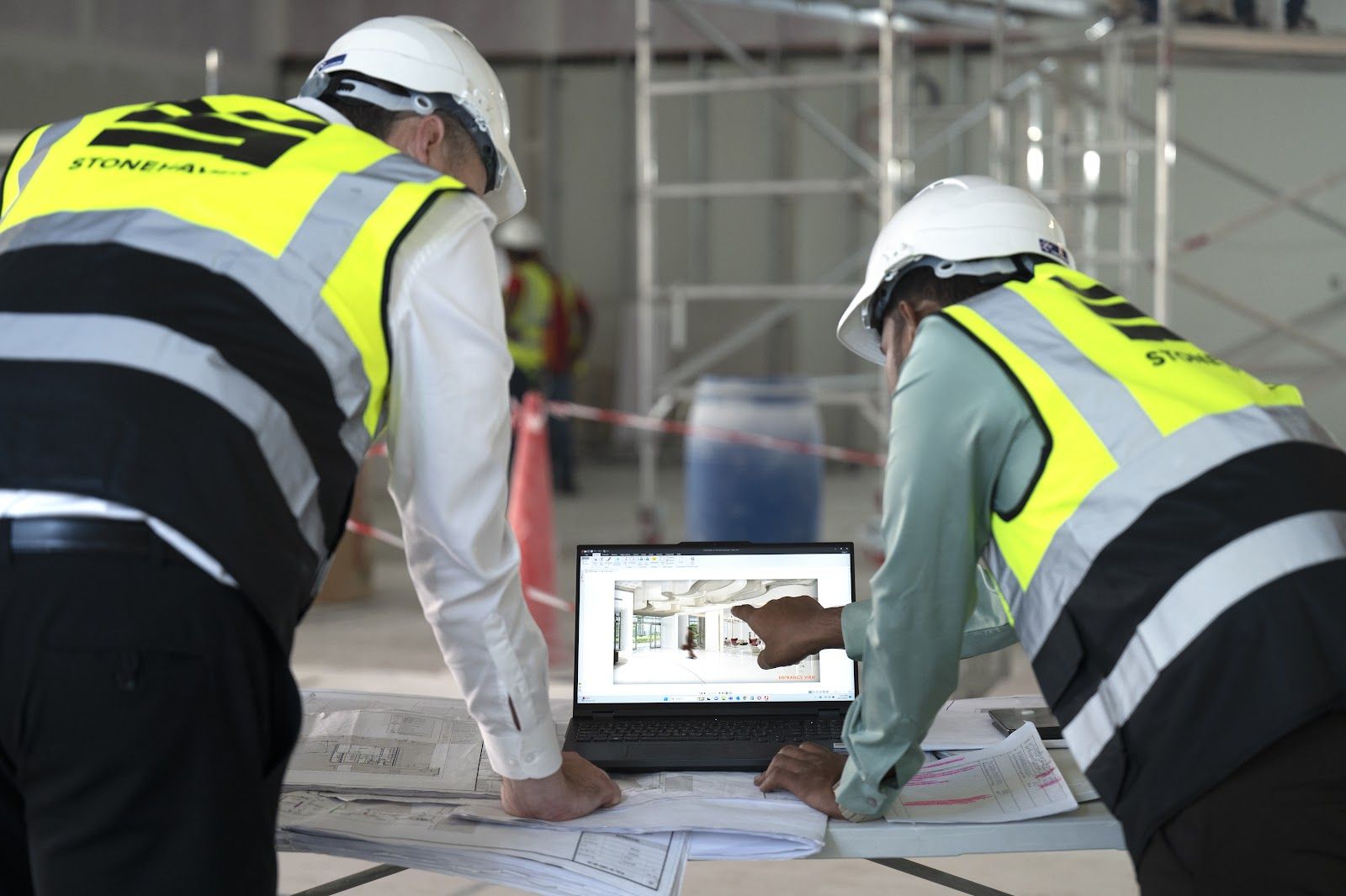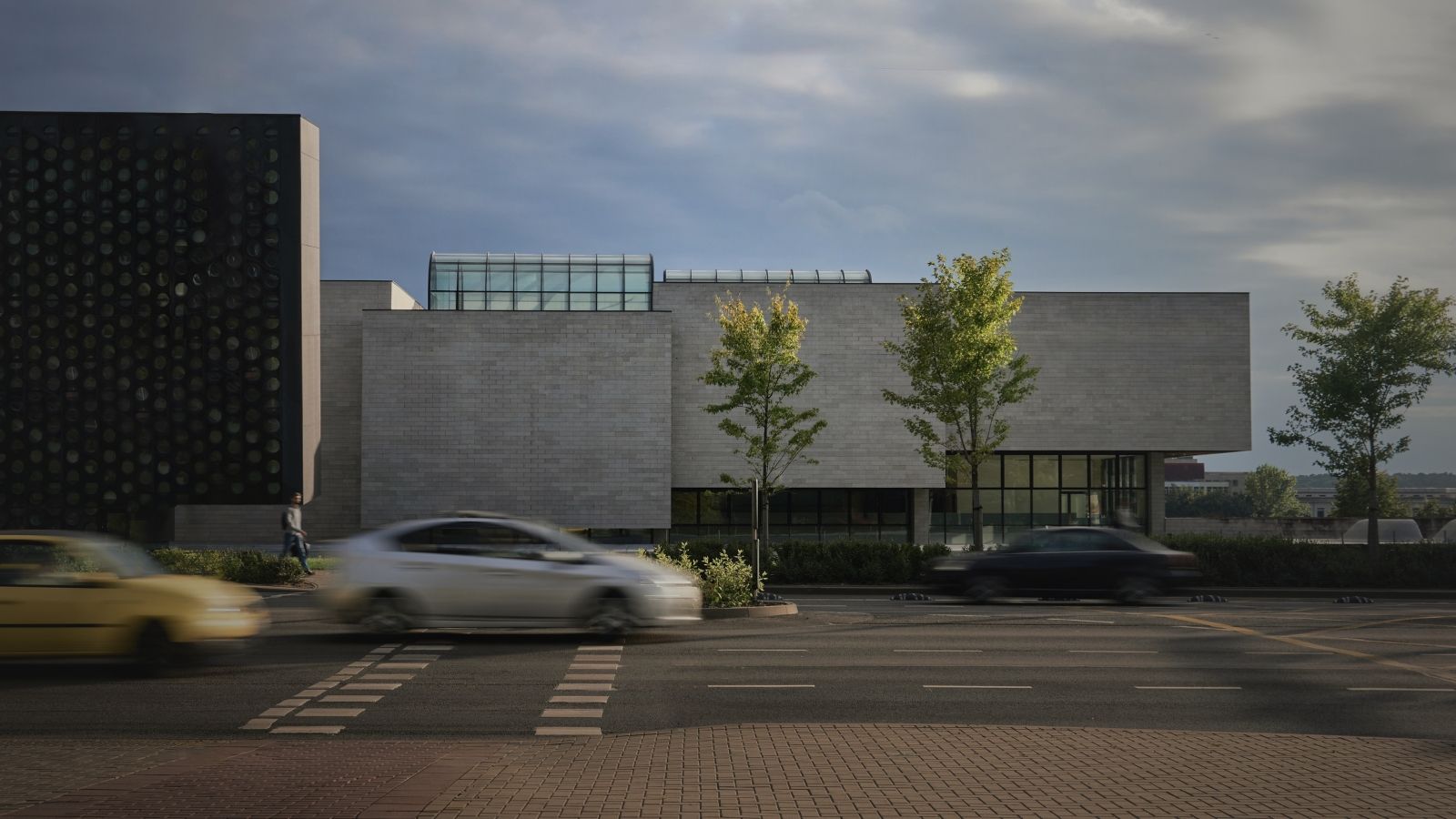The construction industry is evolving at an unprecedented pace. With complex designs, tight project schedules, and increasing demand for cost efficiency, traditional construction workflows struggle to keep up. Miscommunication between stakeholders, design clashes, and on-site modifications lead to project delays and budget overruns. This is where BIM coordination services come into play.
Imagine working on a high-rise project and realising halfway through construction that the ductwork clashes with a steel beam. Without BIM coordination, this issue would only be discovered on-site, leading to costly modifications. But with a BIM coordinator overseeing the project, such conflicts are identified and resolved before construction even begins, saving time, money, and resources.
In this guide, we’ll explore what BIM coordination is, the role of a BIM coordinator, how the process works, and why it’s a game-changer for modern construction projects. Whether you're an architect, contractor, or project owner, understanding BIM coordination will give you a competitive edge in today’s construction industry.
What is BIM Coordination?
BIM coordination is a digital approach to organising different disciplines in a construction project to prevent design conflicts before they occur on-site. It ensures that architectural, structural, and MEP systems align seamlessly in a unified BIM model.

Think of BIM coordination as a digital rehearsal for construction. Just as a film director ensures all elements of a movie fit together before shooting begins, a BIM coordinator ensures that different building components—like HVAC systems, plumbing, and structural elements—work in harmony. A study showed that BIM coordination has reduced field conflicts during construction, benefiting 61% of users in Saudi Arabia, 71% in the UAE, and 79% globally.
Key Aspects of BIM Coordination:
-
3D Model Integration – Merging separate discipline-specific BIM models into a federated model.
-
Clash Detection and Resolution – Using tools like Navisworks to identify and eliminate conflicts between design elements.
-
Interdisciplinary Collaboration – Ensuring smooth communication between architects, engineers, and contractors.
-
Data-Driven Decision Making – Using real-time BIM data to enhance design accuracy and project efficiency.
Without BIM coordination, construction teams often face last-minute changes, unexpected clashes, and costly rework. With it, projects stay on track, within budget, and free from preventable errors.
What Does a BIM Coordinator Do?
A BIM coordinator is the key player responsible for ensuring a seamless BIM workflow across the project lifecycle. They act as the bridge between architects, engineers, contractors, and project managers, ensuring that all design elements integrate smoothly.
What are the Main Responsibilities of a BIM Coordinator?

Model Management & Collaboration
-
Managing and integrating BIM models from various disciplines, including architecture, structure, and MEP systems, to ensure seamless collaboration.
-
Overseeing version control processes, ensuring all team members have access to the most up-to-date and accurate models.
-
Maintaining coordination drawings to eliminate discrepancies and ensure alignment between design and construction phases.
-
Monitoring model performance and addressing any technical issues related to BIM workflows.
Clash Detection & Resolution
-
Conducting comprehensive clash detection analyses using advanced software such as Navisworks and Revit to identify design conflicts.
-
Facilitating collaboration between multidisciplinary teams to address and resolve identified clashes proactively, minimising the risk of on-site delays.
-
Documenting all clashes and resolutions to ensure transparency and accountability throughout the project lifecycle.
-
Optimising workflows by utilising clash reports to enhance overall project efficiency.
BIM Standards & Compliance
-
Ensuring that all BIM models comply with international standards such as ISO 19650 and other relevant industry benchmarks.
-
Developing and implementing internal protocols to maintain data accuracy, consistency, and interoperability across different software platforms.
-
Conducting regular audits to verify compliance with established standards and identifying areas for improvement.
-
Collaborating with quality assurance teams to align BIM processes with overarching project standards.
Hands-on Training & Support
-
Providing hands-on training to project teams on BIM tools, workflows, and best practices to improve adoption and efficiency.
-
Acting as a key resource for stakeholders, offering guidance on leveraging BIM technology for better decision-making and project outcomes.
-
Organising workshops and knowledge-sharing sessions to keep teams updated on the latest BIM advancements and technologies.
-
Offering ongoing support to resolve queries and ensure the effective implementation of BIM processes throughout all stages of the project.
This expanded description reflects the crucial role of a BIM Coordinator, emphasising their contribution to improving project efficiency, collaboration, and compliance in the construction industry.
A skilled BIM coordinator doesn't just manage files—they enhance project efficiency, eliminate costly errors, and improve team collaboration.
How Does the BIM Coordination Process Work?
The BIM coordination process follows a structured workflow to ensure all project elements are aligned before construction begins.
Step 1: Model Creation on Respective Software
Each discipline (architecture, structure, MEP) develops its own BIM model using software like Revit.
Step 2: Model Integration
The individual BIM models are merged into a federated model in software like Navisworks for clash detection and coordination.
Step 3: Clash Detection & Conflict Resolution
Using automated clash detection, the BIM coordinator identifies conflicts, which are then reviewed and resolved collaboratively.
Step 4: Coordination Meetings
Regular BIM coordination meetings ensure real-time communication between teams to address and resolve issues efficiently.
Step 5: Approval Of Coordinated Model
Once all clashes are resolved, the final coordinated model is approved, ensuring a smoother construction process with minimal surprises.
By following this proactive approach, construction projects avoid costly errors, delays, and miscommunication.

Benefits of Hiring a BIM Coordinator on Your Project
Hiring a BIM coordinator is one of the best decisions you can make for your construction project. With the increasing complexity of building designs, tighter project deadlines, and the need for cost efficiency, the role of a BIM coordinator is more crucial than ever. They help bridge the gap between different disciplines, ensuring that architectural, structural, and MEP systems work together seamlessly.
✅ Fewer Errors & Rework
One of the biggest challenges in construction is design conflicts and errors that only become apparent once work has started on-site. When clashes occur between different systems—such as a ventilation duct intersecting with a structural beam—contractors must halt construction, revise the design, and redo the work, resulting in costly delays.
A BIM coordinator uses advanced clash detection tools like Navisworks and Revit to identify and resolve these conflicts before construction begins. This proactive approach reduces costly rework, ensuring a smoother construction process.
✅ Improved Efficiency & Project Timelines
A poorly coordinated project leads to delays, miscommunication, and bottlenecks. By having a BIM coordinator oversee model integration and issue resolution, the entire construction workflow is streamlined and optimised.
-
Timely issue resolution ensures that the project stays on track.
-
BIM coordinators establish clear workflows, preventing confusion between different stakeholders.
-
Efficient coordination reduces waiting time, ensuring that construction teams can move forward without unnecessary interruptions.
With fewer disruptions and better planning, your project is delivered on time and within scope.
✅ Significant Cost Savings
In construction, time is money. Any delays, errors, or rework can inflate project costs significantly. Investing in BIM coordination services helps mitigate risks, leading to substantial cost savings.
- Clash-free designs prevent unexpected on-site changes, reducing material wastage.
- Optimised construction sequences lead to better resource allocation and labour efficiency.
- Fewer RFIs (Requests for Information) reduce administrative burdens and speed up decision-making.
✅ Better Collaboration & Communication
Effective collaboration is the backbone of successful construction projects. A BIM coordinator ensures that all disciplines—including architects, engineers, contractors, and project managers—work together seamlessly.
- They facilitate regular BIM coordination meetings, ensuring that everyone stays aligned.
- They maintain open lines of communication, ensuring faster problem resolution.
- Using a Common Data Environment (CDE), they ensure that all teams have access to the most up-to-date models and project data.
With better communication, fewer errors, and improved efficiency, a BIM coordinator helps create a collaborative, well-structured project environment.
✅ Compliance with Industry Standards & Quality Assurance
Regulatory compliance is critical in construction. A BIM coordinator ensures that all BIM models meet regional and international standards, such as:
-
ISO 19650 – The global standard for BIM information management.
-
Dubai Municipality’s Mandate – BIM is mandated for specific large-scale projects, particularly those exceeding 40 stories or 300,000 square feet, as well as for government buildings like hospitals, universities, and schools.
-
LOD (Level of Development) standards – Ensuring that models are created at the appropriate level of detail.
By maintaining high-quality standards, they enhance project credibility and ensure a smoother approval process.
The Role of the BIM Coordinator in the Design Stage
The design stage is a critical phase in any construction project, and a BIM coordinator plays a key role in ensuring that all disciplines—architectural, structural, and MEP—are aligned before construction begins. Their expertise helps to eliminate errors, clashes, and inefficiencies, resulting in a smoother and more cost-effective project.

1. Model Integration and Clash Detection
A BIM coordinator combines models from different disciplines into a federated BIM model, ensuring that all components align properly. Using software like Autodesk Navisworks and Revit, they conduct clash detection analysis, identifying conflicts such as overlapping structural beams and mechanical systems before they become costly issues on-site.
2. Standardising Modelling Practices
To maintain consistency and accuracy, BIM coordinators enforce modelling standards and compliance protocols, ensuring that all project teams follow ISO 19650 and LOD (Level of Development) requirements. This ensures that designs are structured, precise, and easily shareable.
3. Facilitating Design Coordination Meetings
BIM coordinators organise and lead design review meetings, where they bring together architects, engineers, and lead design consultants to resolve clashes, discuss design challenges, and refine workflows. These meetings ensure a collaborative approach that leads to a more cohesive and efficient design process.
Conclusion
The construction industry is evolving rapidly, and BIM coordination services have become an indispensable tool for project success. In a field where precision, efficiency, and collaboration are key, relying on outdated coordination methods leads to delays, costly mistakes, and unnecessary rework. As projects grow in complexity, the need for seamless integration of architectural, structural, and MEP systems has never been greater.
A BIM coordinator ensures that the entire design and construction workflow is managed with accuracy and efficiency. By integrating digital models and detecting clashes before they occur on-site, they help teams eliminate costly errors, optimise timelines, and enhance communication. The difference between a poorly coordinated project and one that runs smoothly and on schedule often comes down to the presence of a skilled BIM coordinator.
The return on investment (ROI) for BIM coordination is undeniable. Companies that integrate BIM services into their workflow experience higher productivity, reduced material wastage, and increased profitability. It’s not just about using cutting-edge technology—it’s about using it strategically to create better, more sustainable, and cost-effective construction outcomes.
About us
At Stonehaven, we dedicate world-class BIM services to help architects, engineers, and contractors achieve precision, efficiency, and cost savings in their projects. As a leading BIM coordination services provider in Dubai, we ensure that construction teams operate seamlessly, reducing errors and optimising workflows from design to execution.
With years of expertise in Building Information Modelling (BIM), we understand the challenges faced by the modern AEC (Architecture, Engineering, and Construction) industry. Our solutions are designed to eliminate inefficiencies, enhance collaboration, and prevent costly on-site errors by leveraging cutting-edge technology and global BIM standards.
At Stonehaven, we believe that better BIM coordination leads to better buildings. Whether you need clash detection, execution planning, or full-scale BIM implementation, our team of highly skilled BIM coordinators ensures that every detail is accounted for.

















